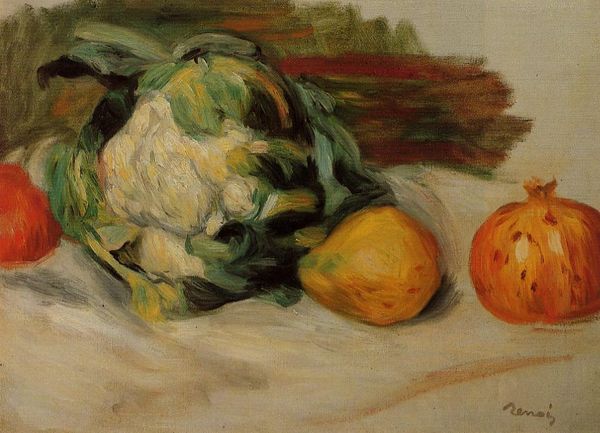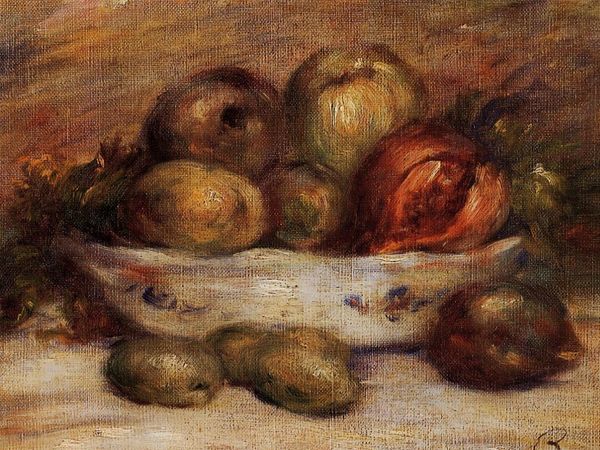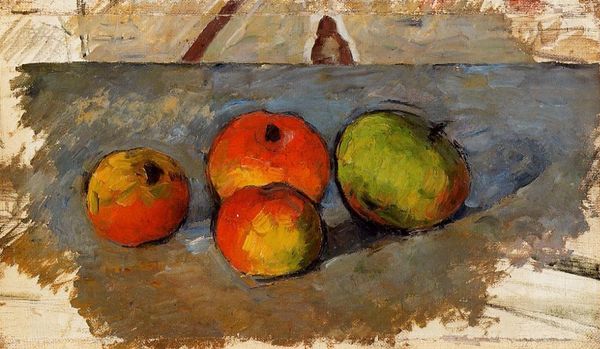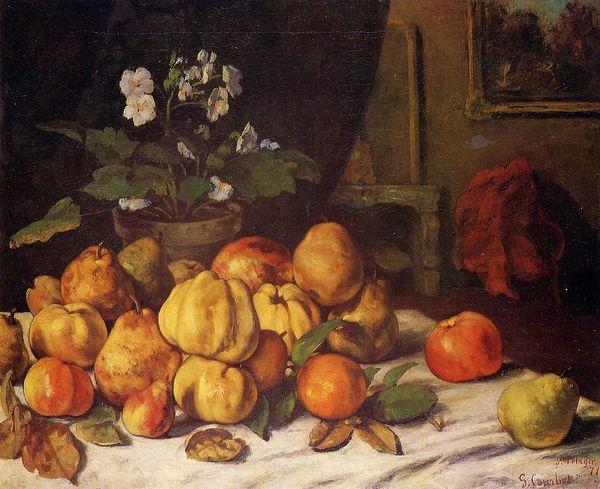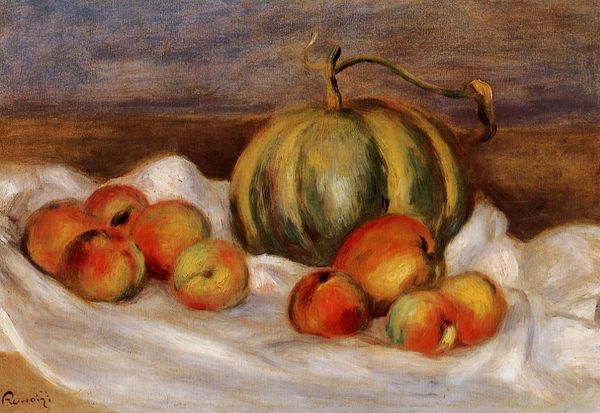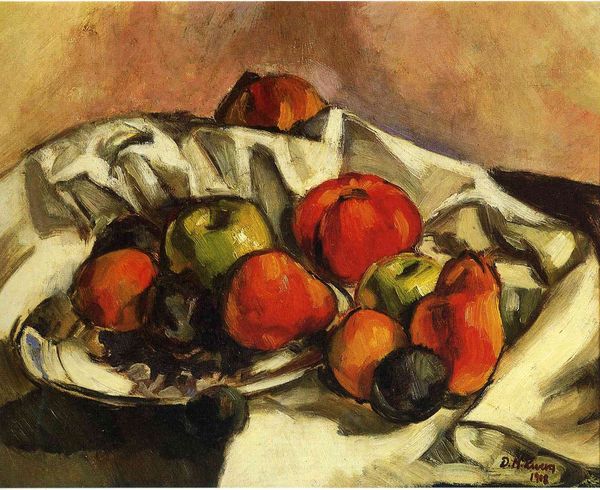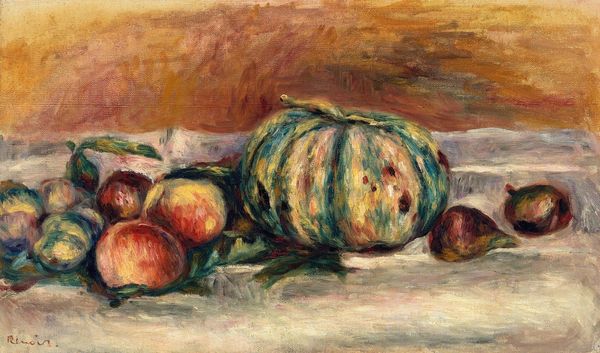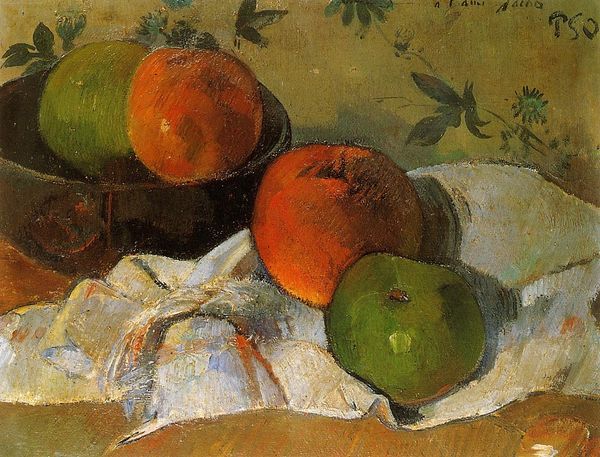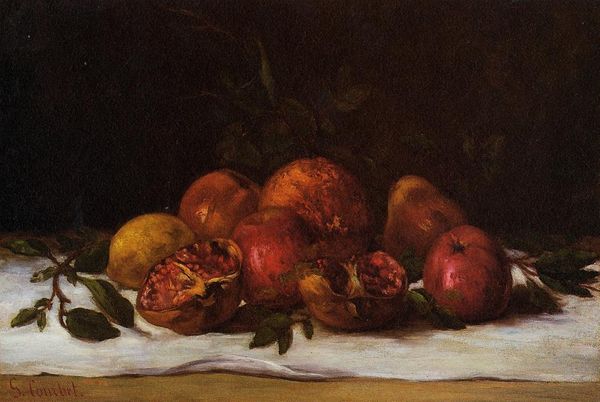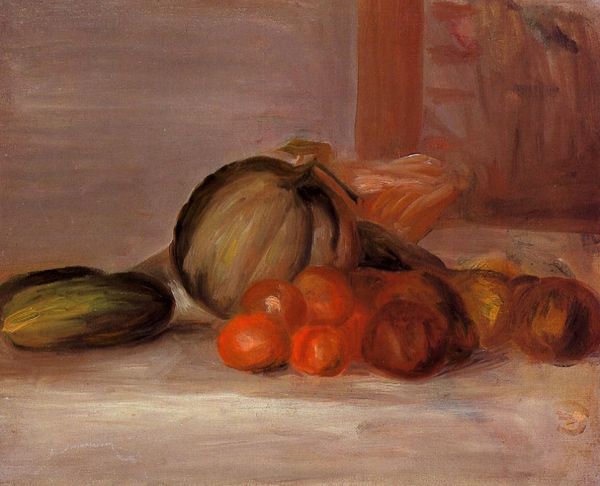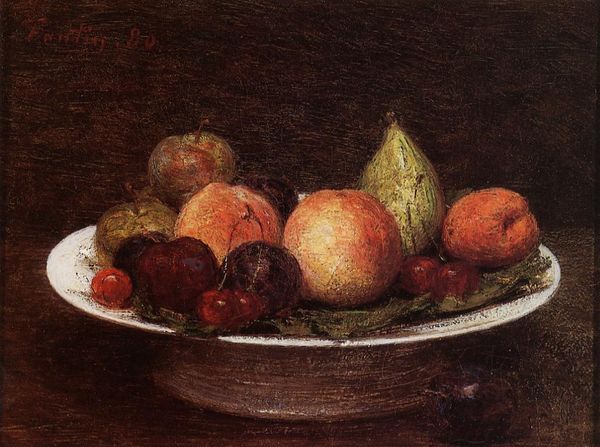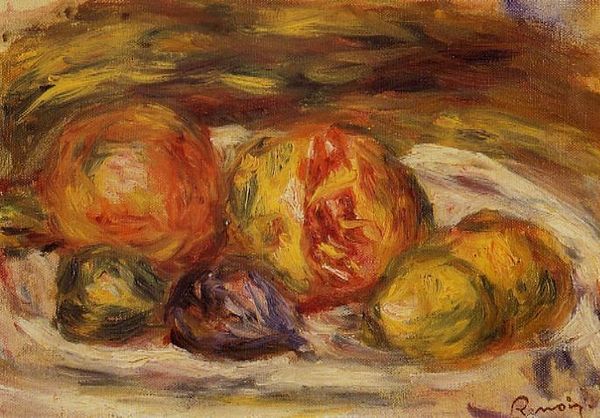
Copyright: Public domain
Editor: Here we have Paul Gauguin’s “Pears and Grapes,” created in 1875 using oil paint. There's a certain subdued quality to the painting; the muted colors and simple composition create a very calm effect. What strikes you about it? Curator: It is, indeed, an exercise in visual composure. Note the layering of forms; Gauguin presents us with a flattened picture plane, a quality heightened by the use of impasto and underpainting. The table and the background almost merge, collapsing depth. Do you observe how the fruit are arranged not for naturalism, but for the sake of a rhythmic composition? Editor: I see that now! The curves of the pears echo each other, and the dark grapes provide a contrasting visual weight. But why this emphasis on form over realism? Curator: Formalists seek to decode art through elements such as line, shape, color, and texture, setting aside any potential narrative. Gauguin prioritizes the relationships between the forms, allowing color and shape to guide the viewer's eye, rather than any pre-existing notion of what a still life should be. The artist uses this contrast and depth to draw the viewer into the composition. Editor: That's fascinating. I had initially focused on the subject matter, but now I see the real subject is the interplay of forms themselves. Curator: Precisely. It's an opportunity to appreciate the intrinsic aesthetic qualities—a study in visual harmony, wouldn't you agree? Editor: Absolutely. Thinking about it now, seeing beyond just fruit has broadened my understanding. Thank you.
Comments
No comments
Be the first to comment and join the conversation on the ultimate creative platform.
